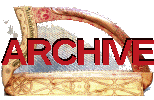

|
The Fairy Queen is a tune said to have been composed by Turlough Carolan (1670-1738).
There are other tunes related to our tune; there is a traditional Irish song “Ciste no Stór” which has basically the same melody in a simpler form; and there is also the family of tunes usually titled “Cuckoo” in older sources. Edward Bunting theorised that the Fairy Queen is not a truly original composition but an extension or adaption of the “Cuckoo” tune.
There is also a Carolan song lyric, beginning “Imreas mór a harla eidir na righthibh...” (A great contention arose between the Queens...). In 18th and 19th century manuscript copies, this song lyric is often titled Si beag & si mor, the great & little fairy, or the Fairy Queen(s). Nowadays it is usually assumed that this lyric fits the “Cuckoo” tune but Alasdair Codona argues that this is not a very plausible match, suggesting that the “Imreas mór” lyric fits the Fairy Queen tune instead.
Click here for my table of all variants of all these interconnected tunes and lyrics.
Here are the source notations for the tune I have found so far, first the “Fairy Queen” and then afterwards “Ciste no Stór”:
J&W Neal, A Collection of the most Celebrated Irish Tunes proper for the violin, German Flute or Hautboy 1724, p.13:
“Fairy Queen by Sigr Carrollini”
![]()
This setting is the earliest, printed during Carolan’s lifetime, and was the version used by Donal O’Sullivan in his book Carolan, so it has become the best known setting. It seems to me that it may be a baroque fiddle version, rather than being taken direct from Carolan’s harp playing.
Untitled fragment of Carolan tunes, “The Carolan Fragment”, post 1742, p.14 no.19
“Fairy Queen”

This setting is very interesting, having both treble and bass, and possibly having a direct connection back to Carolan via his son, and his patron Dr Delaney. There are what looks like fragments of harp idiom in the bass, though it is clearly a harpsichord arrangement of the tune not an accurate transcription of a harp version.
James Oswald, The Caledonian Pocket Companion c.1745, vol.1 p.23:
“The Fairy Queen”

Oswald’s setting is in his own florid Scottish baroque fiddle style.
Edward Bunting, The Ancient Music of Ireland 1796, p.3:
“ Bean righ na sibhrach Fairy Queen - Carolan”

On the annotated copy in the British Library (BL Add ms 41508) he has written Harp O Neill / This tune is not Carolan’s but was adapted by him from an original / melody, it had two other parts which are in the collection published at Christ Church yard by Neale.
Bunting claims that this is Arthur O’Neill’s harp version, and while it is clearly arranged by Bunting for piano, it seems to me that there is a lot of harp idiom hidden in the piano setting. It is a shame we don’t have Bunting’s earlier field notebooks with drafts and sketches of O’Neill’s performance.
Pádraig Ó Néill in c.1800 wrote our tune into his manuscript:
“C Fairy Queen”

My hand copy from the Ó Néill manuscript
As well as “Fasces Sunt Fasces / Monors est [Onins]” alongside the title he has written a text vertically in the margin in his substitution cypher.
Mulholland includes our tune in A Collection of Ancient Irish Airs 1810, p.62:
“Bainrioghuin na siothbhraca - Fairy queen”

The MacLean-Clephane sisters in Mull in 1816 included our tune in their manuscript of tunes taken “from the playing of O Kane”. Many of these tunes are attributed to Carolan solely in this manuscript, often in the face of solid alternative attributions elsewhere. The tunes are often arranged for piano or pedal-harp.
“The Fairy Queen by Carolan”

My hand copy from the MacLean-Clephane manuscript
The first section is headed “The Queen’s Motion” and the final section “The Fairy Dance”.
“Ciste no Stór” appears in Edward Bunting’s manuscripts as well as in his published piano arrangements:
Edward Bunting, c.1800? ms33(1) p.17:
“ Kiste na Storh”

My hand copy from the Bunting manuscript
Bunting notes “Set in red book”, presumably referring to a piano arrangement in another manuscript.
Edward Bunting also includes our tune in ms13 f46v:
“ Kiste na Store. My Love and Treasure”
I haven’t seen this one. I believe this is a volume of piano arrangements prepared for the 1840 publication. Bunting writes “very ancient, date and author / unknown / from the late Dr Young Bishop of Clonfert at Castlerea / Co Roscommon”.
Edward Bunting prints two versions of the tune in his The Ancient Music of Ireland 1840. In the introduction, p.13, is a simple arrangement:
“ciste no stor. Coffers nor stores
”

And in the music section of the 1840 volume, p.24 no.29:
“My Love and Treasure / Very Ancient Author and
Date Unknown”
In the index, Bunting writes “From Dr. Young, Bishop of Clonfert at Castlereagh, County Roscommon, in 1800”, and in the introduction p.96: “Ciste no Stór. ‘Coffers nor stores’. This very ancient air seems to have been the original of Carolan’s Fairy Queen, the only difference being that Carolan has added two more parts to it, in which which way it was generally played by the harpers. In an old printed copy of the Fairy Queen, published about 1725, in the Editor’s posession, it is still more extended, but by being so it loses its effect.” (referring to the Neal print).
Holden, c.1806, has two printings of our tune in two different publications, titled “Save me from Death” and “O! Save me from Death”, but I have not yet seen either of these. This alternative title derives from a line of the song lyrics.
Mulholland includes our tune in A Collection of Ancient Irish Airs 1810, p.56:
“Sind E siar an rod - Hide me from death”

Here is a film of a performance based on the Bunting 1796 version, said to have been noted from the playing of Arthur O’Neill.